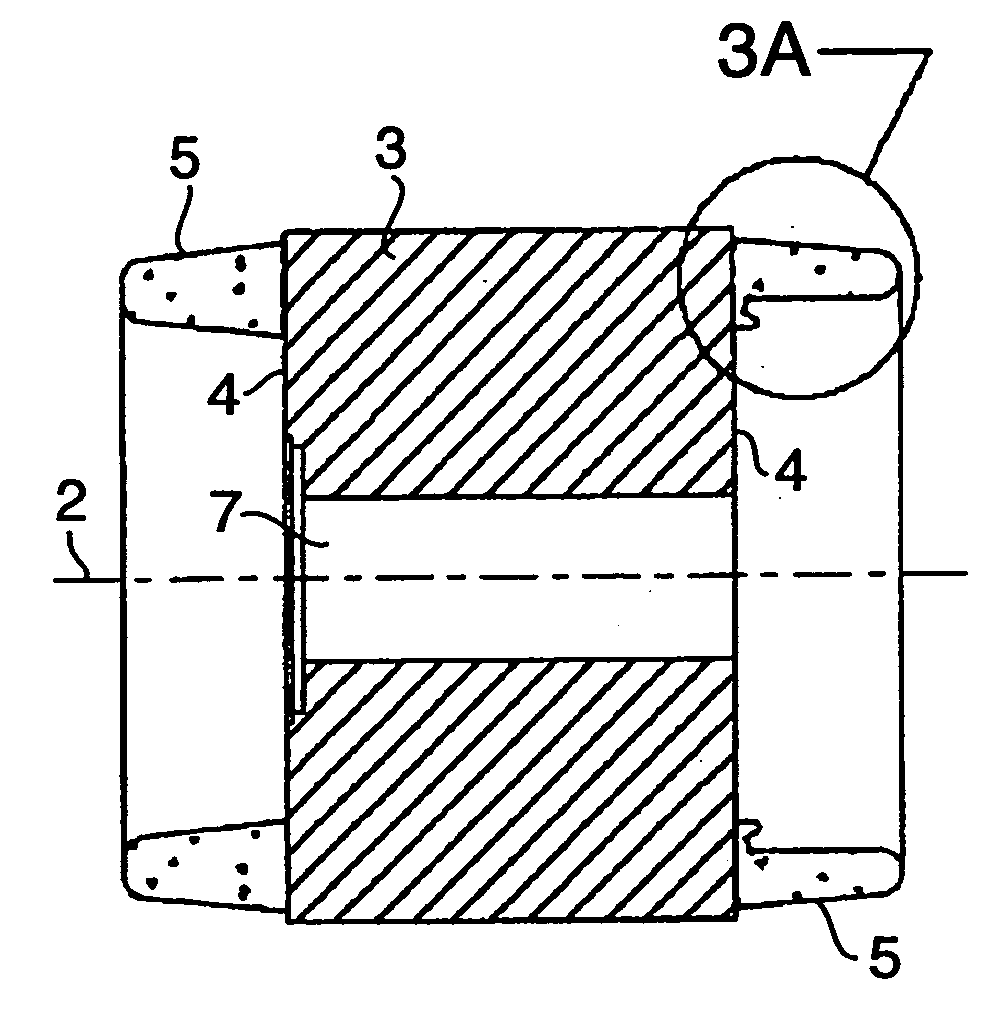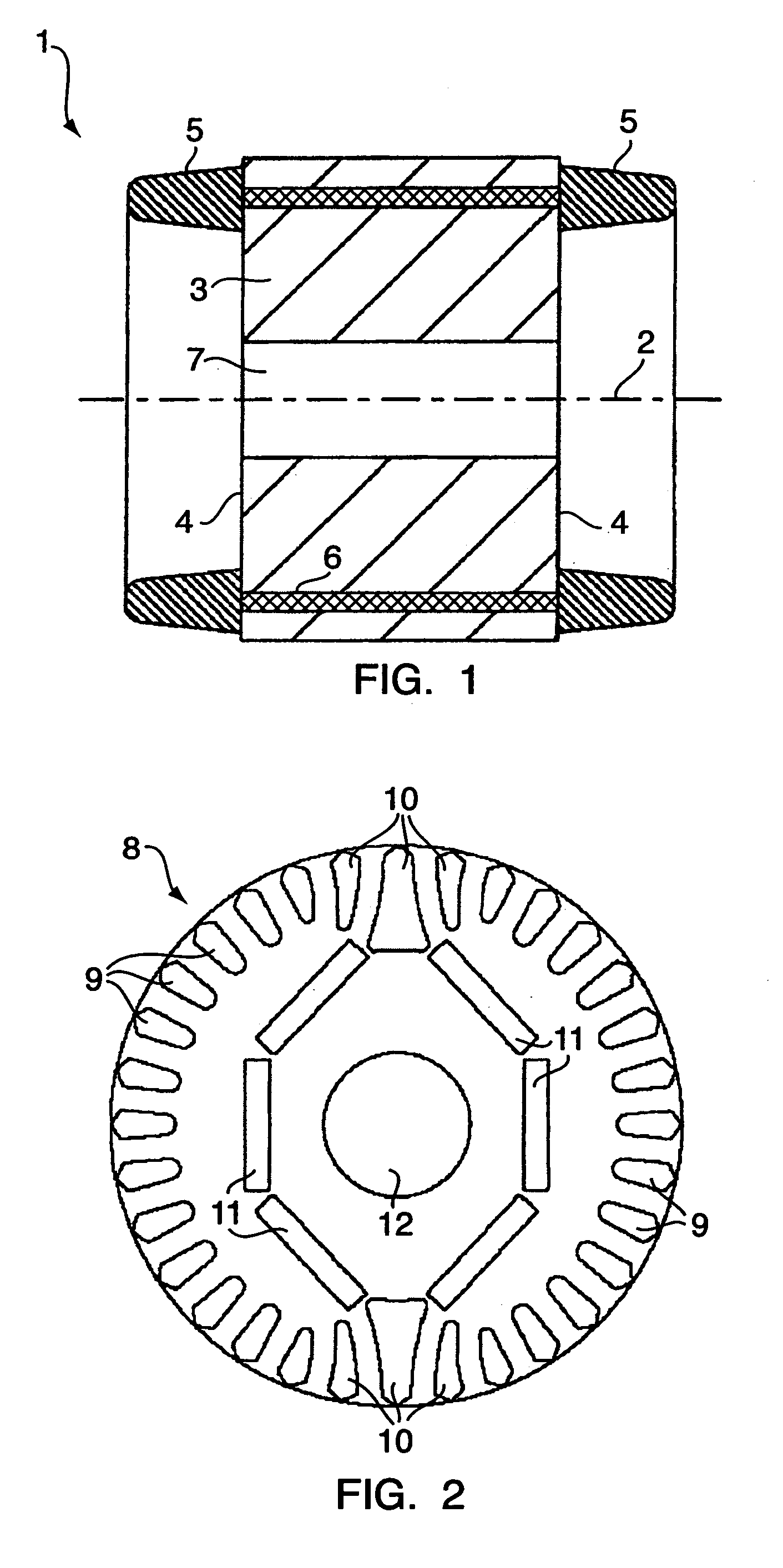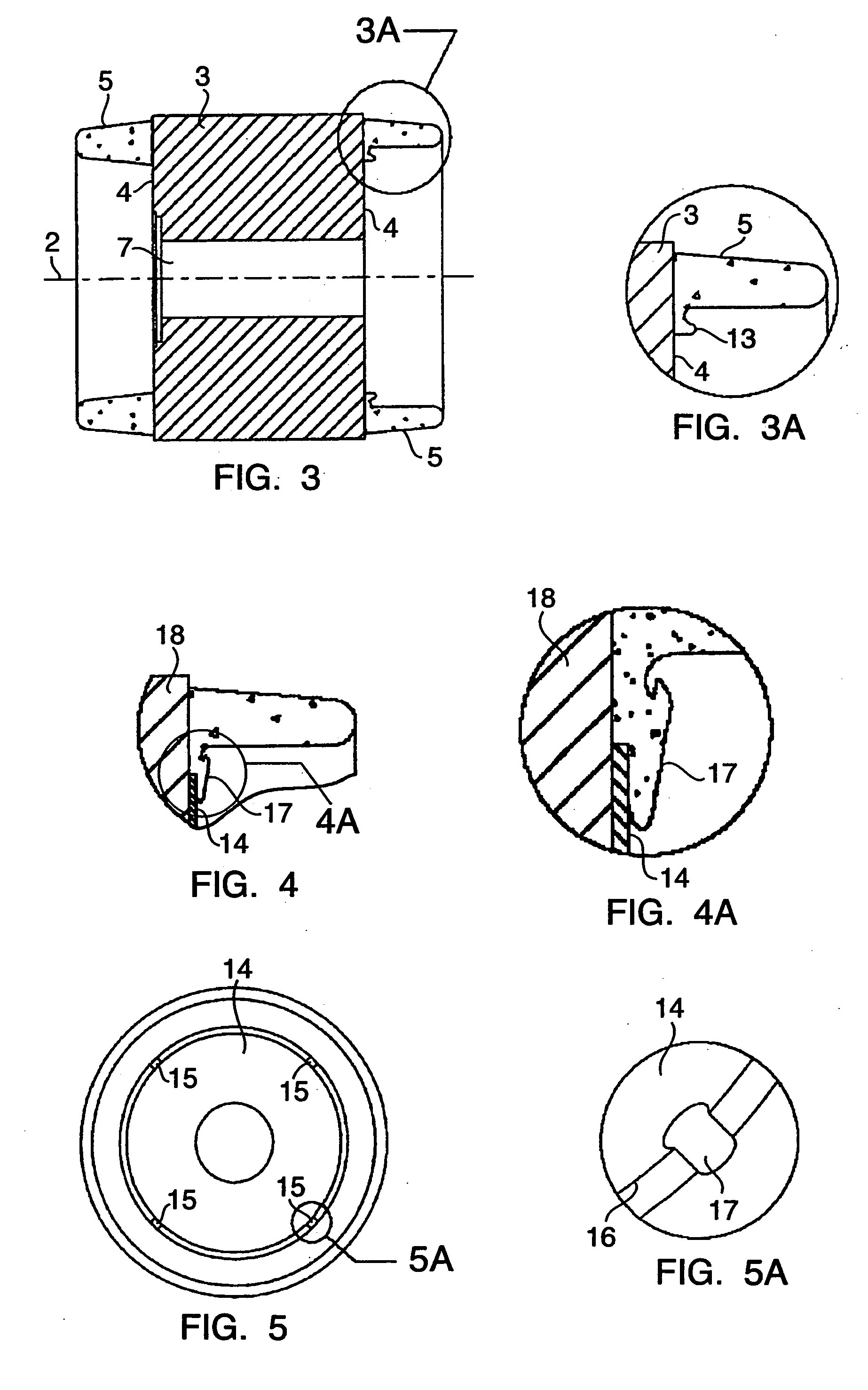Rotor for an electrical motor
a technology for electrical motors and rotors, which is applied in the direction of synchronous motors, dynamo-electric machines, magnetic circuit shapes/forms/construction, etc., can solve the problems of increasing the complexity and cost of rotor manufacturing, inappropriate start-up characteristics of synchronous motors, etc., to facilitate the manufacturing process, simplify the design, and facilitate the manufacture of cheaper and more reliable motors.
- Summary
- Abstract
- Description
- Claims
- Application Information
AI Technical Summary
Benefits of technology
Problems solved by technology
Method used
Image
Examples
Embodiment Construction
[0023]FIG. 1 shows a rotor 1 which is carried in a stator for rotation around the centre axis 2. The rotor comprises a rotor core 3 with first and second axially opposite end-faces 4. The rotor further comprises first and second axially opposite short circuit rings 5 which join the axially extending windings 6. The rotor is assembled with a drive shaft (not shown) which extends through the opening 7 and which is suspended in rotational bearings to enable rotation of the rotor relative to a corresponding stator (not shown). The rotor is made from sheets of a metal which is stacked to form a laminated core. Each sheet comprises an opening which, in combination with other sheets, forms conductor slots extending axially throughout the rotor. After the assembly of the sheets into a rotor core, conductive bars, constituting the windings, are moulded directly into the conductor slots using the slots as a mould, and the short circuit rings are moulded as an integral part of the bars. To inc...
PUM
 Login to View More
Login to View More Abstract
Description
Claims
Application Information
 Login to View More
Login to View More - R&D
- Intellectual Property
- Life Sciences
- Materials
- Tech Scout
- Unparalleled Data Quality
- Higher Quality Content
- 60% Fewer Hallucinations
Browse by: Latest US Patents, China's latest patents, Technical Efficacy Thesaurus, Application Domain, Technology Topic, Popular Technical Reports.
© 2025 PatSnap. All rights reserved.Legal|Privacy policy|Modern Slavery Act Transparency Statement|Sitemap|About US| Contact US: help@patsnap.com



